The British Army’s Diverse Resources for the New Term
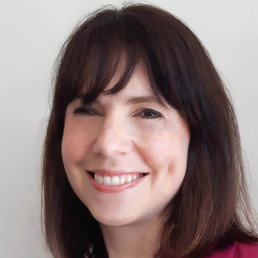
Written by Eleanor Brown
Head of Education Marketing at Capita
The British Army has developed new resources to help students aged 11-16 build their understanding of why it is important to commemorate significant groups in the history of the British Army. Focusing on diversifying the curriculum, This resource pack features Women in the Army, LGBTQ+ Voices and Black History resources with links to PSHE, History and Citizenship.
Each of the resources are available for key awareness days in the school calendar and include ready-to-use lesson plans, assembly presentations, case studies and films to help students understand the changing roles of service people in the British Army throughout history, reflect on who we remember as a society or individuals and explore what it’s like to serve in the Army today. The resources are part of the British Army’s dedication to addressing the inequalities within the organisation and raising awareness of the contributions of service people both historically and now.
Women in the Army Resources
An excellent resource for International Women’s Day on March 8th, the Women in the Army resources have curriculum links to PSHE / Health and Wellbeing, Citizenship and History. The lesson plan offers interactive tasks to help young people to recognise and challenge harmful stereotypes and prejudice both at work and in society as a whole. Showcasing the significant roles women have played from the 1800s to today, the resources explore key terms such as feminism, gender and intersectionality, encouraging students to consider the evolving roles of women in the Army in the context of wider society.
The assembly slides and the film builds on these key themes, showcasing the contributions and accomplishments of women in the Army and reflecting on the stories we remember. The assembly brings a specific focus to the history of women in wartime and features empowering women including Captain Flora Sandes, who was the only woman to fight on the front line of WWI, and Adelaide Hall, a jazz singer who entertained troops in WWII and was the first Black performer to be given a long-term contract with the BBC.
LGBTQ+ Resources
Perfect for LGBT History Month 2020 in February, The LGBTQ+ Voices lesson resources show the progress made within the Army and in wider society with activities that celebrate the contributions of historical and current LGBTQ+ Army personnel, including WWI soldier Edward Brittain and Deborah Penny, the first trans soldier in the British Army. Students can also learn how they can be supportive of all LGBTQ+ people, and other groups and communities, through the allyship video resource.
By profiling six historical LGBTQ+ figures, such as the mathematician Alan Turing and poet Wilfred Owen, the assembly resource asks students to reflect on their contributions. This is followed by a film featuring current LGBTQ+ soldiers, addressing the significance of LGBTQ+ history to them and the progress that has been made by the Army to ensure everyone feels welcome.
Black History Resources
These Black History digital resources for Key Stages 3 and 4 include an assembly and lesson plan to help students understand the stories of Black British, African and Caribbean service people who have often been unfairly excluded from the history books and help students consider some of the reasons for and effects of these omissions.
The assembly resource profiles service people from throughout history, while the interactive lesson resources offer source materials to help students build core historical skills and explore the contributions and stories of Black Britons, West and East Africans and Caribbean service people during World War One. The resources also offer examples of the impact of the war on different Black women, documenting case studies of a Trinidadian, British and an East African (from the Tanzania-Malawi border region) woman.
Questions at the end of each resource help facilitate discussions that address the significance of Black History Month and studying Black History more broadly and how this relates to modern discussions on race and diversity, including reflections from current Black soldiers to help build student’s discussions.
All the British Army resources can be downloaded for free online at: https://apply.army.mod.uk/base/lessons
The Heterosexual Matrix
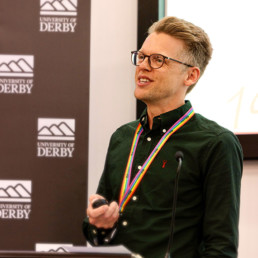
Written by Dr Adam Brett
Adam has completed a doctorate exploring the experiences of LGBT+ secondary teachers. A presentation of his findings can be found here. He also co-hosts a podcast called Pride and Progress, @PrideProgress, which amplifies the voices of LGBT+ educators, activists and allies.
“Children who need to be taught to respect traditional moral values are being taught that they have an inalienable right to be gay”
– Margaret Thatcher, October 1987.
Thanks for that, Margaret. You and your government created a culture of fear, silence and moral panic surrounding LGBT+ lives that continues to this day. Your speech continued, that “all of those children are being cheated of a sound start in life – yes, cheated!”.
She was right about one thing. Section 28 meant children were being cheated of a sound start in life.
Section 28 cemented schools as heteronormative spaces, where being heterosexual and cisgender were silently assumed, leaving LGBT+ people with the impossible decision or whether to be invisible or hyper-visible.
What a choice to have to make.
Do I hide my authentic self to fit in with the legislated normativity of schools, or do I make myself visible and put myself at professional and personal risk?
Patai (1992) refers to this form of hyper-visibility as ‘surplus visibility’, where a person is ‘extrapolated from part to whole’ and seen to represent the entirety of a minority group.
You might be thinking that a lot has changed since the repeal of Section 28 nearly 20 years ago in England. It’s true, a lot has changed and there has been significant cultural and legislative improvements for LGBT+ people. However, schools remain stubbornly heteronormative and cisnormative environments.
Think about the aspects of school that are predicated on a static, binary gender. Toilets; changing rooms; sports; gendered language; uniform; seating plans; residentials. The list goes on. What does this communicate for those who cannot or will not fit into the neat binary of male or female? That they don’t belong.
We could consider similar examples about the ways in which heteronormativity is maintained as the social order in schools. The curriculum; ethos; culture; policies; microaggressions; homophobia; the hidden curriculum; role models.
We can conceptualise all these examples as code.
I love to use the film The Matrix as a metaphor to explain the ways in which socially constructed ideas such as heteronormativity are held in place. When we are plugged into the matrix, we believe it’s real and can’t see the code that is continually constructing it. We can’t imagine alternatives as it’s all there is, in the same way that we can’t think outside of language.
However, when we develop the critical awareness of what is upholding this normativity and develop a language to name it, we become unplugged. LGBT+ people have the critical awareness to identify the ways in which schools seek to include or exclude them. Section 28 plugged us into a matrix of understanding where the silent assumption of cisgendered heterosexuality was so entrenched, that to this day, being an LGBT+ person in school can be a point of constant navigation and information management. Exhausting.
As educators and leaders, we need to listen to the lived experiences of our LGBT+ students and colleagues to create a culture, curriculum and language which can disrupt this code. We need to name things as heteronormative; we need to name things as cisnormative; we need to name things as microaggressions. We need a new language: one that allows us to think outside of the current heterosexual matrix. We need to create schools and spaces where LGBT+ people feel safe and included, without attracting surplus visibility.
Section 28 cheated a whole generation of LGBT+ young people out of a sound start in life. It’s time to unplug the matrix and make sure it doesn’t happen to the next generation.
Adam Brett
@DrAdamBrett
My Lip Sync Battle
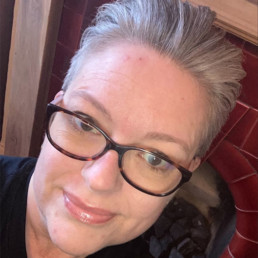
Written by Emma Ludlam
Emma has worked in Early Years for 14 years and is into her 8th year as Head of Nursery in a London Independent School. Emma has a background in the NHS and is passionate about Early Years education and development with a special interest in Disability, Diversity and Inclusion. Emma is also an EYFS Co-ordinator, dovetailing the two ends of the EYFS in her school.
I only ever knew one person with Dysphonia and Dysphagia before I was affected. My Father’s voice slowly disappeared and his swallowing was affected by Progressive Supranuclear Palsy. I always found it so distressing that he struggled to express his needs and couldn’t eat “normal” food because of the risk of choking. I never imagined I would be in a similar position in my early 40s.
In 2020, some surgery to my throat caused some nerve damage, leaving me with a paralysed vocal cord. My cord became peeled back and stuck, exposing my airway and damaging my voice.
Until you lose your voice, you have no appreciation of how much you rely on it and how much it makes you – you! As Early Years Professionals, we’re well practiced at supporting children to develop communication and language and readily support communication difficulties in the very young, those with EAL and those with a SEND that makes communication more challenging. I didn’t appreciate that I would find myself in Speech Therapy too as an adult. Voice disorders are wholly under-recognised; arguably less common than hearing or sight loss; people find it more difficult to be inclusive and more awareness is desperately needed. I am still me – just a very quiet me.
My voice is typically very weak and lacks volume. Even a simple boiling kettle can drown me out and I sound very raspy; very similar to someone with a bad dose of laryngitis. I lack expression and my tone sits a little higher than my pre-damaged voice. I have lost much of what makes me who I am. I cannot sing or laugh with any sound and the voices and accents used to read a good story, are no longer there. Dreams of reading Harry Potter to my grandchildren seem to slip further and further away. I used to love singing; (I’m not saying I was good!) whether it be in the shower, with young children or even belting out a good old Whitney Houston at karaoke – it’s something that has come very hard. I’ve upped my Lip Sync Battle game massively!
One of the more complex aspects of my condition is the accompanying dysphagia. At my worst, simply a sip of water would cause me to choke until my face was red and the tears rolled down my face. Eating is no longer an enjoyable experience; more a process of dodging aspiration and learning what you can eat and drink. Food becomes a hazard – the Squid Game of eating and drinking! Dysphagia increases risk of aspiration (food enters the trachea and lung) and can cause chest infections and pneumonia – the gift that keeps on giving! I now enjoy, safely, a partly liquidized diet and am more aware of what I can and can’t eat, but it means eating in public or outside of home is still incredibly tricky and embarrassing for me.
So how do I function? Adaption and acceptance (which is very hard to achieve) is a huge proportion of “moving on.” Waking up from anaesthesia to find yourself so changed is a real challenge. There are several aids that I couldn’t live without. My dog has been incredibly adaptive and now knows that when I grab my high decibel whistle (because I cannot call or shout) that it’s time for a walk and he has taken on board a change to hand signals well – it seems you can teach an old dog new tricks! The children I work with have been the most adaptive and that gives me real heart for the future of diversity and inclusion in all walks of life – they are our future. They have accepted my voice amplifier (a small speaker box I wear attached to a mic headset) and this helps me to be louder and is less straining for me. On most video calls, I think people assume it’s just a mic – it’s slightly less familiar when worn off screen. My other most treasured possession is my face mask from National Spasmodic Dysphonia Association which reads “Bear with me I have a voice disorder;” it allows people in shops etc an opportunity to understand my needs and help me – hearing me through a mask is impossible. I also use my iPhone to write notes for others to read.
It is essential that we take time to understand all types of communication needs. We need assistance; understand I have a lot to say and need that chance. Accepting that we cannot take speech for granted when engaging with others is a huge first step. Maintaining independence and inclusion should be our aim in all walks of life.
I challenge you to a Lip Sync Battle!
New Research: LYFTA Storyworlds Help Reduce Anxiety Around Meeting People From Different Backgrounds
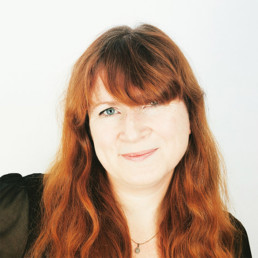
Written by Dr Harriet Marshall
Head of Educational Research at Lyfta and has been a global education advocate for over 20 years, as a teacher, researcher, consultant and education project leader.
A University of Tampere study found that virtual immersive environments that contain interactive human stories can help reduce learners’ social anxiety around meeting people from different cultural backgrounds.
A study using teaching resources from Lyfta has found that the multi-sensory and participatory nature of immersive 360° experiences led to a decrease in learners’ sense of social anxiety about meeting people from different cultural backgrounds. Engaging with new people in an immersive virtual setting gives students the opportunity to identify common interests and, as a result, develop more positive feelings towards them. Although the study was completed with undergraduate students, we are excited about the implications for engaging school-aged students with digital immersive storytelling.
The study has been published in the International Journal of Emerging Technologies in Learning. Its findings show that the reduction in social anxiety was especially significant among those who had high levels of social anxiety before the learning experience, adding to our growing understanding that immersive digital storytelling can be of particular benefit to students who get little or no opportunity to interact with those from different cultural backgrounds.
The researchers were influenced by our own school-based research (summed up in the video here), where students were shown photos of six people featured in our storyworlds, and asked how much they felt they had in common with each person, before and after exploring their stories. We found that experiencing the storyworlds led to a significant positive difference in students’ attitudes towards the people they ‘met’ there.
Our vision at Lyfta is that by the time a child leaves school, they would have had the chance to experience, and emotionally connect with, human stories from every country in the world. Lyfta stories give students the opportunity to see how interconnected and interdependent we all are. The findings of this study provide exciting evidence that Lyfta’s powerful and immersive resources have real impact in helping to nurture empathetic global citizens.
Read the University of Tampere study in full now
If you are looking to foster global citizenship and empathy in your classroom, you can Register now for free trial access to two immersive Lyfta storyworlds. https://registration.lyfta.com/
Increasingly Visible: Being an ‘Out’ LGBTQ+ Educator
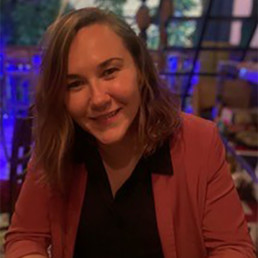
Written by Vickie Merrick
PE and History Teacher at an International School in Rome and has previously taught in Vietnam and the UK.
This post was very much inspired by Dr Adam Brett’s (@DrAdamBrett) recent talk about his PhD findings on what it means to be a visible LGBT+ educator. It is a personal reflection of my journey to becoming visible in an international teaching community.
During my ITT year there wasn’t the same talk and work that there is now about DEI, social justice and decolonising the curriculum. As a white British cis woman going through my training year, I never thought about the importance of representation. “If you can see it, you can be it” wasn’t a phrase that ever crossed my mind.
Now I realise and acknowledge that I have white privilege, I’m cisgender, I’m middle class (in that whilst my parents consider themselves working class, I went to a grammar school, I’ve gone to university twice and am currently back again completing an MSc and these experiences have afforded me the opportunity to emigrate and continue my career abroad) and I was lucky enough to be born in the Global North. There are many things about my life that mean I have an easier time than so many people in the world.
I’m also a member of the LGBTQ+ community. And I have a chronic health condition that impacts both my physical and mental health. These two areas are the only parts of my life where I have ever faced any difficulty due to my identity.
Section 28 left a strange underlying legacy on schools in England. Although I began working in schools a long time after its 2003 repeal, I heard “don’t tell the students about your personal life, it’s none of their business who you are” more than once in the staffroom. Even though my straight colleagues would quite openly talk about their partners/spouses, the insinuation was that I shouldn’t allude to being a gay woman in front of my classes.
In addition I was aware of the cultural background of my students and knew that some may not have heard positive things (or anything at all) about LGBTQ+ people at home. If I was in the same situation now I don’t think I would hide myself at the risk of causing offence (offence after all is taken not given) and would have used it as an educational opportunity to discuss embracing others regardless of their identity. But I was a new teacher concentrating on learning how to teach (something I’m still learning) and was not too concerned with being a representative of the LGBTQ+ community.
There were students who found out that I was gay and I never encountered any problems from them, if anything they were extremely positive and open about wanting to support LGBTQ+ people. On the other hand, I did once experience a student using ‘gay’ and ‘f**’ as an insult to another student in a lesson I was covering so I followed the school policy and the student waited outside for an on call member of staff. The member of staff had a chat with me and the student then brushed off the incident and sent the student back into the lesson. Again, looking back, as a more experienced teacher, I wouldn’t have let it slide. But as an NQT, I didn’t feel that I had any power to insist that this was homophobic language and should be treated in a serious way that shows the student it is not acceptable.
The final reason that I was never fully visible in my first school was more of an internal one. I teach history and PE. We’ve all heard of and perpetuated (myself included when I was a kid at school) the stereotype of the lesbian PE teacher. I didn’t want to be a stereotype. I’d previously been in the Army Reserves for a short time and found the same stereotype about female soldiers. That wasn’t my reason for leaving the Reserves but with the Army, working in sport, and being a PE teacher, it can get tiring constantly laughing with and brushing off people making jokes and having ‘banter’ about a part of who you are. And of course you laugh because they’re your colleagues and friends. They mean no harm but it’s the microaggressions that we know now to be aware of alongside our own unconscious biases that can build up and deeply impact people.
Leaving the U.K. and yearly visits to Pride Parades behind brought a change to my level of visibility. I left the U.K. with my partner and moved to Vietnam. Throughout the recruitment process we were up front about applying as a couple and didn’t face any problems when it came to contracts, housing allowances and dealing with HR in our new country. There was a surprising moment when the estate agent who was sorting out our rental apartment said the landlady was concerned that two single western women would have lots of men visiting and would receive complaints. The estate agent luckily had read the situation well and assured the landlady that she didn’t have to worry about frequent male visitors staying over…
In school itself it was a different story. We often talk about walking into our school and seeing a rainbow painted on one of the corridor walls with the words “love is love” below it. Talk about a welcoming sign. Again, at the beginning I didn’t intentionally come out to any of my students. Not through a conscious choice but I still didn’t really consider the positive impact it could have for LGBTQ+ students to see a visibly LGBTQ+ member of staff. There were other LGBTQ+ staff and couples at the school and openly LGBTQ+ students who felt they could be ‘out’ at school even if they couldn’t be at home due to the traditional values of their families. Over time, and partly due to the nature of international schools, many of the students my partner and I taught learnt that we were a couple- and exactly as it should be, they treated this as a total non-event. They treated us the same as the other teaching couples in the school. My form, however, were so excited on the day they noticed my engagement ring that I had to usher them out of the door to be on time for their first lessons because they wanted to stop and hear the full story of the proposal. And as we were getting ready to leave and say our final goodbyes in the midst of a lockdown and online learning, some of our grade 10 students were insisting that we sent wedding photos to one of our colleagues after the holidays so that they could see our dresses and hair and make-up.
In Vietnam, my visibility as an LGBTQ+ educator had increased because I felt supported by my colleagues, the school and the students. And the more visible myself and other LGBTQ+ educators were, the more I noticed the way the vast majority of our students, even though they were from all over the globe with different cultures, beliefs, values and backgrounds, treated their LGBTQ+ peers with an awareness, a kindness and acceptance. I left that school thinking that the kids are alright.
The transition into our second (well my third, as I had taught at two different schools in Vietnam) international school was where the first real challenges of being an ‘out’ educator were posed. And they were not posed by students. Recruitment during COVID was a struggle. We sent off around 40 applications and did about 15 interviews between us. We had been lucky to get jobs in Vietnam for our first international roles as it became quickly apparent that many other places were not as keen on hiring an LGBTQ+ teaching couple. Sometimes this was due to visa complications or job openings, other times it was the laws of the country (43 jurisdictions still criminalise lesbianism) and laws around housing. After a particularly challenging experience where we had offers rescinded because, after checking, the school decided their community wasn’t ready for an LGBTQ+ couple, we were feeling pretty disheartened.
Many of the schools we were applying to were IB schools. I still struggle to see how the IB, who preach about global communities and international mindedness, can promote schools and allow them to teach the IB programs when the school communities themselves are anti-inclusion.
Nearing the end of our tether with the recruitment process, my partner had an interview with a small school in Italy. Whilst they did not have a role for me, they were willing to make something part time if my partner was offered the job. The interview was a breath of fresh air. They were the first school who had asked about my partner or I as people and wanted to get an idea of us to find out how we’d fit into their community. They were upfront about wanting LGBTQ+ staff as they were aware that they had students who were part of the LGBTQ+ community and they didn’t always see themselves represented in the staff body. After accepting the jobs, my (now) wife was asked about joining the DEI team, and whilst she is careful as she knows this has become or can have the potential to be quite tokenistic in some schools, she is aware that she has the ability to do work with her team members around social justice and to help combat racism, sexism, homophobia, transphobia, ableism and other forms of discrimination within our school community.
For the first time in a school, as an educator, I have been a visible member of the LGBTQ+ community from the beginning. I am aware that I have a-sexual, transgender and non-binary students (and probably others who identify as somewhere on the gender/sexuality spectrum) and delight when they come to tell me about the first time they went to a pride parade or show me the rainbow item of clothing they have worn that day. Whilst I cannot know or understand all of their experiences, especially as a cisgender woman, I can be an empathetic listener from the large umbrella family that is LGBTQ+. The school has an LGBTQ+ club run by a member of staff who is an ally to the LGBTQ+ community and who knows that providing an inclusive space for our students is everyone’s responsibility. The community isn’t perfect and the country, with its strong religious affiliations, has laws against gay couples adopting. It is a work in progress in our school that will require buy-in from all its members to fully promote inclusivity and celebrate diversity, no matter what that looks like. But it is not tiring to be visible here. Every day when I tie up my rainbow laces (a great campaign from @Stonewall) I know the importance of showing my students that LGBTQ+ people are a part of their community, we’re here to stay and that’s very much ok.
What's in a Name?
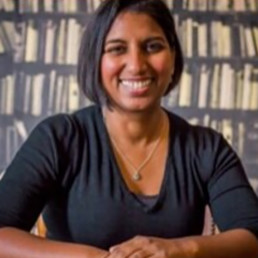
Written by Malarvilie Krishnasamy
Malarvilie is a seasoned leadership consultant, coach, and trainer with over 20 years of experience in education. As a former history teacher and senior leader, she passionately advocates for coaching as a catalyst for transforming school cultures. Malarvilie offers accredited courses, endorsed by The Institute of Leadership, which develop emotional intelligence and assertive leadership skills. Her reflective and supportive programmes enhance staff morale and well-being, promoting humanity in leadership. A vocal proponent of equity, diversity, and inclusion, she actively engages as an ally through speaking engagements, workshops, and amplifying the work of others. Malarvilie is also deeply committed to promoting Personal, Social, Health, and Economic (PSHE) education, recognising its pivotal role in nurturing well-rounded individuals.
“What’s in a name? That which we call a rose
By any other name would smell as sweet.” Juliet
Do names matter?
According to Shakespeare, not so much.
My name is Malarvilie. It may seem unusual but in India, Malaysia and Sri Lanka amongst the Tamil, Malayalam and Telungu communities (about 200 million people) it’s the equivalent of Sharon or Kate.
In my parents’ culture, the father’s first name is the family surname. My dad’s name was Krishna and his dad’s name was Rajaiyan. When the British closed down their naval base in Singapore, my dad became jobless but was offered a British passport as Britain needed workers. As he had 3 kids he jumped at the chance to work in the ‘motherland’. On his passport, the British added the ‘samy’ to Krishna. They did this often. Ever wondered why there are so many Patels in India? Much like ‘Jones’ for the Welsh and in Ireland, the English changed many names e.g.instead of Tadgh, they’d rename them ‘Tim’.
Malar means flower. Vilie means eyes. It sounded like I looked like an alien when I was born. I’ve clearly grown into my eyes. So they named me Malarvilie which together means a flower in bloom. My husband, Tim rips me to pieces every now and then about it.
When I was born, my dad wanted my grandad’s name added to my birth certificate as it’s an ancient Indian name and he was proud to have a child born in London. But my parents’ English wasn’t great in 1973. So my birth certificate says my name is Malarvilie Krishnasamy Rajaiyan. Even at my dad’s funeral, his name was wrong. When I mentioned it, a family member said ‘Oh he didn’t mind’. Is that the point? I also believe he did mind.
The Ting Tings understood!
In certain cultures they don’t correct you. In the UK there’s an awful habit of changing names to suit the English pallet. Or worse, it’s changed for you. Age 3, my childminder called me Mandy.
I’ve had a range of nicknames over the years:
– Mandy
– Malibu
– Milli Vanilli
– Mallory
My favourites are: ‘Malarvilie Christened-a-Salami’. I also found ‘Malarvilie Ham-bacon-Sarny’ amusing.
Even my parents called me Malar. Apparently by the time they said ‘vilie’, I was already there.
But since 6th form I’ve been Mal.
Teaching
As a teacher, in our first lesson together, I’d tell the kids all the nicknames I’ve had and put on the board Krish/na/sa/my. I’d say I’ve heard all the nicknames as a kid but I couldn’t do anything then, now as a teacher I can hand out detentions! I’d also say I expect them to say my name properly and I will ensure I say their name properly. Some children would say ‘Call me whatever’. But I’d insist they tell me how to say their name.
As a teacher in one school, on my first day I introduced myself to staff as Malarvilie. Within a few hours everyone was calling me Mal, without permission, some without trying, some with a look of panic asking ‘do you have a short version?’ It was disheartening.
Smash the Patriarchy!
We got married in September. I didn’t change my name, as it’s my name. But Tim added Rajaiyan to his name. Our 2 kids have Rajaiyan as their middle names. It means ‘victorious king’. Our eldest is named Taigh Rajaiyan McCullagh, you can see his heritage in his name – Indian Irish. I feel a sense of pride when I see my children’s names in print.
In the last 30 years, no one has called me Malarvilie until now.
I moved to Spain. At passport control in Valencia, the guy looked at my name and said ‘Malarvilie’ I nodded in shock and he asked ‘Is that correct?’ It was perfect. The Spaniards roll their ‘r’s so it’s easy for them. They’re also not afraid of long names. Unfortunately, Mal means’ bad’ or ‘evil’ in Spanish so saying ‘My name is Mal’ would be problematic. So, I introduce myself as Malarvilie. Tim has started calling me Malarvilie too as introducing me as ‘evil’ doesn’t feel right to him.
In Spain, in a funny way I feel more whole and less apologetic for my heritage.
So, what’s in a name? A lot actually.
An Ongoing Marriage Bar in Education?
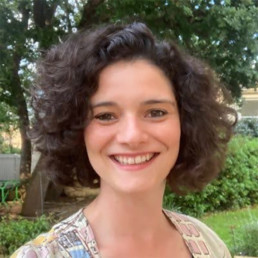
Written by Emma Sheppard
Emma founded The MTPT Project, the UK's charity for parent teachers, in 2016 when on maternity leave with her first child. She has 12 years experience as an English teacher, Lead Practitioner and ITT Lead, and now runs The MTPT Project full time.
Of all the protected characteristics, considering the relevance of ‘marriage and civil partnership’ to our education sector might leave us scratching our heads a little. In its most obvious form, discrimination according to this characteristic can play out in interview or progression scenarios where prejudices around employees’ stability, current or future priorities or flight risk might play in their favour, or against. There are also overlaps to consider here with the protected characteristics of pregnancy and maternity, and sexual orientation, especially given the welcome changes to marriage law in the UK over the last decade.
However, recent research from The MTPT Project has revealed that being married or in a long-term partnership can have an impact on teacher retention, particularly amongst heterosexual mothers. In our three-year study into female teachers aged 30-39 who had stayed in, or left teaching, relationships with husbands and partners played a part in teachers’ decisions to leave the profession. But what nuance is their behind these findings, and what can we do to avoid discrimination towards teachers in marriages or civil partnerships if this variable seems to spell out bad news?
Firstly, it’s important to note that this research is ongoing: The MTPT Project are yet to release a report on the role that husbands or partners play in keeping teachers in the profession, or supporting their progression. What’s more, far from instigating teachers’ decisions to leave the classroom, husbands and partners were found to act more symbolically as a mirror, or foil to other much larger issues that affect our workforce, whether teachers are married or not.
In this aspect of the study, interviews revealed the following:
Where teachers in the study were the lower wage earner, decisions around their husband / partner’s job took priority. So when it came to relocation, reduction of hours, or taking on a heavier domestic load, a teacher was lost to the profession because… well, her husband’s job was more important – it paid the bills! But isn’t this simply a reflection of the gender pay gap that persists both in education and British society as a whole, and the continuing likelihood for women – particularly mothers – to take on the majority of caring and domestic duties?
When teachers in the study were stressed and burnt out, it was their husbands who were both negatively impacted, and who provided the voice of reason and compassion. Interview participants told stories of interventions around mental health, improved relationships once they’d stopped teaching and generally happier family units. But aren’t husbands simply providing the echo here to persistent reports around poor wellbeing that pervade the entire profession?
When teachers in the study had the time – often during maternity leave or school holidays – to reflect and look for an escape route, they compared their jobs with their partners’. Even when they saw a lower wage, they saw greater flexibility, better benefits packages, higher levels of praise, and better work-life balance. But doesn’t this simply hold a mirror up to the rigidity and exhausting workload we continue to find in some of our schools that make life particularly difficult for the 54% of our workforce who have childcare responsibilities, and which prematurely drives our young teachers out of the profession in droves?
Just over half of our population in England and Wales are married or in a civil partnership, so discrimination against an employee or interview candidate on the grounds of marriage or civil partnership would be (to pinch a phrase from a local dad in the park) ‘pissing against the wind’. We’d end up with very few teachers left if we discriminated in this way! However, The MTPT Project’s study shows that the overlap between the three protected characteristics of sex, pregnancy and maternity, and marriage and civil partnership can leave women in particular needing greater systemic supports from our schools – support that would benefit every member of staff, regardless of their demographic.
Want to reduce the risk of losing the married mothers on your team? Work towards addressing the gender pay gap in your school or academy trust; provide greater flexibility; reduce workload; listen to feedback to understand the practical steps that will improve colleagues’ wellbeing, and provide extended paternity leave packages that help to share out the domestic load from the moment that baby is born.
We Wish You an Inclusive Christmas
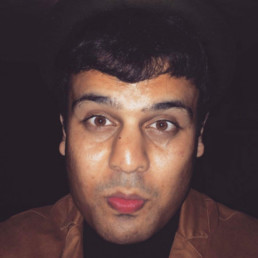
Written by Shuaib Khan
Shuaib is a teacher, sociologist, poet and podcaster.
As the holiday season approaches, this can become a powerful point of reflection for schools on how inclusive their practices are. This is especially the case for how schools cater for the needs of staff and pupils who have mixed feelings about the festive period as they don’t celebrate Christmas. In this blog (originally published on the Leader’s Digest), we will be looking at ten ways your school can make Christmas celebrations more inclusive.
What is inclusion?
Diversity, inclusion, equality and equity are used interchangeably, but they have different meanings and interpretations. Many schools have their own equality, diversity and inclusion (EDI) leaders in an effort to promote fairness, access and equity. During the Christmas period, there is a need to think about alternative provisions for those who, for whatever reason, do not wish to partake in festive activities. So, how do we define ‘inclusion’?
The diversity network Diverse Educators (DiverseEd) provide us with the following definition of ‘inclusion’.
Inclusion is the achievement of a work environment in which all individuals are treated fairly and respectfully, have equal access to opportunities and resources, and can contribute fully to the organisation’s success.
School communities are not homogenous and not every member of staff or pupils will celebrate Christmas. For some, the holiday season can evoke bad memories and the feeling of being excluded as everyone else enjoys school productions, secret Santa, Christmas lunch and the rest of the exciting festive activities. So, how can your school make Christmas inclusive?
DiverseEd reminds us that inclusion should not be viewed as just an add-on but rather as an institution-wide point of reference to meet the needs of everyone in your care. Inclusion should be practiced all year round and not just at the sight of a Christmas tree or at the smell of freshly baked mince pies. The conversation about inclusion is nuanced, requires deep personal reflection and remembering that the holiday season can bring mixed feelings. Leader’s Digest recommendations to make Christmas more inclusive is part of, rather than a substitute for your school-wide equality, diversity and inclusion ethos.
Ten ways my school can make Christmas more inclusive
Create a diverse planning committee
Planning Christmas events requires planning and preparation. As a school leader, having a planning committee that is representative of your school community is one way you can ensure a diverse range of views, ideas and thoughts are heard. Planning committees could be made up of support staff, including teaching assistants and also staff who don’t celebrate Christmas. Your school’s Christmas events planning committee can be an excellent way of understanding the individual needs of your fellow colleagues and also of pupils. In making necessary adjustments or alternative arrangements for those who don’t celebrate Christmas, a diverse planning committee can help identify challenges and collaboratively find solutions.
Having an interfaith calendar
As the festive season approaches, it is important to remember that other faiths will have important events and traditions taking place too and these deserve to be acknowledged and celebrated too. For example, Hanukkah which is an eight-day long Jewish festival begins on November 28th and ends on December 6th. Also, Buddhists celebrate Bodhi Day on December 8th. Both of these religious events take place as the Christmas festive season commences. Your school’s interfaith calendar can be a powerful tool to plan celebrations for these respected faiths all year round and make staff and pupils feel respected and valued. An interfaith calendar can also help avoid scheduling mistakes, plan celebrations and guide your schools religious/PSHE curriculum.
Allowing staff and pupils to opt out
An important element of inclusion is offering people options. Staff and pupils should be allowed to opt out of Christmas celebrations if they wish to without fear of judgement or sanction. Christmas can be a really challenging time for some people and as a school leader, if a colleague or pupil doesn’t wish to partake, their wishes should be respected. A big part of inclusion is respecting others, their preferences and allowing them to have the autonomy to not participate.
Make events optional/voluntary
As with allowing staff and pupils to opt out, festive events should be optional and voluntary. Organising Christmas plays or concerts is often done in non-contact time and a lot of invisible labour takes place to make these events happen. School leaders should reiterate that attending events is always optional and that there will be no pressure or judgement if they cannot attend. For some staff, it is not necessarily the case of being unable to make the commitment to after school rehearsals or concert preparation, but rather they have additional responsibilities outside of work. The wellbeing of staff is of paramount importance in making festive events fulfilling and worthwhile for all.
Provide food options
Food is an integral part of Christmas. To ensure all staff and pupils feel included, just as your school canteen would do, catering for all dietary requirements and personal preferences is key. For example, a good idea would be to have separate tables with vegetarian, vegan, gluten-free, Halal, or Kosher food. Another option would be to relay information to pupils and parents about the options and alternatives available during the Christmas period. These are small provisions which will make staff and pupils feel more welcome and included in the Christmas festivities. Going forwards, it is also a really important way of getting to know your staff and pupils. Further to this could be to avoid offering alcohol to staff who don’t drink to avoid offending or alienating them.
Ask staff what they want
How many times have you been stumped on ideas for a secret Santa gift or just unsure if a colleague will like how the school celebrates Christmas? Asking staff what they want is an excellent way to plan Christmas celebrations in your school. This does not mean you have to hand over powers to staff but rather use their intricate knowledge of the pupils to guide your decision making. As a school leader, having ideas put towards you from staff can help refresh how your school embraces the festive season. In liaison with staff, certain practices from previous years that didn’t go well can be rectified or replaced. For example, Christmas jumper day. If a significant proportion of your pupils cannot afford to participate, they will feel excluded. This could easily be replaced with something more cost effective for the local community such as a Christmas tombola. Asking staff, who know the pupils and the school community incredibly well, this can help make Christmas a more inclusive experience for everyone.
Be mindful of the cost
Recently Teaching Assistant’s Digest completed a series of articles on TA pay. Christmas is an additional cost, especially for TAs and support staff who are already facing financial hardships. A £50 staff Christmas meal may seem like a small amount but for support staff, that £50 is days worth of earnings. Part of an inclusive model is including groups who have historically been excluded and TAs definitely fit this criteria. Where possible, if staff events are free or at a reduced cost, SLT should be mindful of this. It’s all good inviting everyone which could easily be interpreted as ‘inclusion’ but what about those who cannot afford to attend? Just because everyone has a seat doesn’t mean everyone can afford to eat! School leaders should also encourage support staff not to spend their own money on school Christmas events such as parties. If they do, an opportunity to reimburse them should be available.
Offer holidays to staff and pupils of other faiths
Again, a part of having an interfaith calendar is knowing exactly when other faiths have their traditions and celebrations. Christmas is a holiday season for everyone but throughout the academic year, other faiths will have traditions and festivals that will require staff and pupils to have time off to observe and celebrate. For example, Eid or Diwaali. Staff and pupils should be entitled to an appropriate number of days to celebrate their religious festivals. As a school leader, it is important to empower your staff with the confidence to request time off and for pupils to feel as though their school values their faith. This can also be done by allowing all staff and pupils to understand the importance of different religious festivals through embedding these into the curriculum and the schools wider inclusive ethos.
Invite feedback
As a school leader, first and foremost, you are a reflective practitioner. The nature of education is that there will always be opportunities to reflect, improve and do better. If a specific event didn’t go too well, encouraging your staff to come forwards and provide feedback is how you can get things right next time. Inviting feedback is the ultimate way of highlighting what worked well and finding areas for development. Feedback could be anonymous, drop-in, staff surveys or asking the pupils about how they found Christmas celebrations at school.
See inclusive practices over Christmas an extension of inclusion
Inclusion should not be something that is centred around December or nativity. As a school leader, it is important to realise that creating a more inclusive festive period for everyone at your school is one step in the right direction. Inclusion is an on-going cultural process of learning, understanding, supporting and of course, including others. Christmas is an opportunity to embed inclusive practices which themselves should permeate throughout your school and enrich everyone along the way.
Although this list is not exhaustive, we hope that it can give you some food for thought. How are you going to make Christmas an inclusive experience in your school? At Leader’s Digest we would love to hear from you.
Section 28 is still hanging over us – but you don’t have to be a LGBT+ expert to make your school inclusive
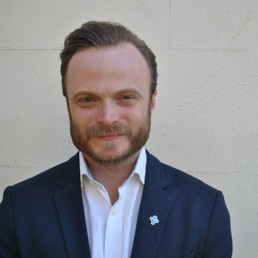
Written by Dominic Arnall
Chief Executive of Just Like Us, the LGBT+ young people's charity.
One in five (17%) teachers in the UK are uncomfortable discussing LGBT+ topics with their pupils, our new research at Just Like Us has found.
It may have been 18 years since Section 28 was repealed in England and Wales but clearly things have not changed as much as we like to think. Growing up LGBT+ is still unacceptably tough, as a result, and huge challenges also remain for LGBT+ school staff who are often afraid to come out in their workplace or to pupils.
Just Like Us’ latest research also found that only a third (29%) of teachers are ‘completely comfortable’ talking about lesbian, gay, bisexual and trans topics in the classroom, despite government guidance of course reinforcing the need to include LGBT+ topics.
We found that primary school teachers are even less comfortable with discussing LGBT+ topics at school, with 19% saying they are uncomfortable and only 25% ‘completely comfortable’, despite OFSTED requiring primary schools to include different types of families – such as same-sex parents – in lessons.
The survey, commissioned by Just Like Us – the LGBT+ young people’s charity – and carried out independently by Teacher Tapp surveyed 6,179 primary and secondary school teachers across the UK. So we know this is sadly not an anomaly.
Why does this matter? Well Just Like Us’ report Growing Up LGBT+ found that having positive messaging about LGBT+ people in schools is linked to all students having better mental health and feeling safer – regardless of whether they’re LGBT+ or not. The evidence is there: LGBT+ inclusion in schools really is beneficial for everyone’s wellbeing.
When so many teachers say they’re uncomfortable discussing LGBT+ topics, such as mentioning that some families have lesbian mums, this has serious knock-on effects for LGBT+ young people’s wellbeing and mental health, who are currently twice as likely to be bullied and have depression. Having silence around LGBT+ topics only results in shame, stigma and students feeling that they don’t belong in school.
We don’t blame teachers for feeling uncomfortable. Some school staff simply may not have had the resources or personal life experiences – but all you need is a willingness to support your pupils and Just Like Us can help provide lesson plans, assemblies, talks and training so that you feel confident discussing LGBT+ topics with your pupils.
It’s also essential that we get the message out that teachers don’t need to be experts on LGBT+ topics to support their LGBT+ pupils.
You also don’t need to be LGBT+. Often we see in schools that this vital inclusion work falls to staff who are LGBT+ themselves rather than all school staff taking on the responsibility of making their school a safe, happy and welcoming place for all of their young people. This work doesn’t need to be done by LGBT+ staff – in fact, how amazing is it for students to see adults in their lives being proactive allies?
One incredible teacher, who is an ally, and a brilliant example of this is Zahara Chowdhury, who teaches at Beaconsfield High and the Beaconsfield School, in Buckinghamshire. She says it’s a “human responsibility” to include LGBT+ topics in the classroom and has been the driving force behind School Diversity Week celebrations at her schools.
It all starts with a willingness to support your students or simply diversify your lessons using our free resources – sign up for School Diversity Week and you’ll get a digital pack of everything you need to kickstart inclusion at your school.
Already doing this work? Let a colleague or fellow educator at another school know by sharing this blog – the more we share resources and reassure staff that you don’t need to be LGBT+ nor an expert, the sooner and better we can ensure all young people feel safer and happier in school.
Inclusion - A Parenting Perspective
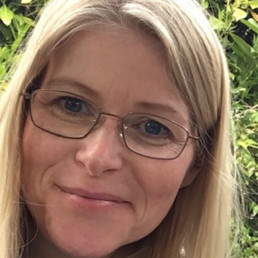
Written by Helen Weston
Helen has two children with significant medical needs which has resulted in her becoming their part time nurse, teacher and advocate whilst simultaneously attempting to be a reasonable parent! Prior to this she worked in Early Years and family support.
Inclusion is a perpetual discussion amongst both teachers and parents alike. This is likely because it has a number of different interpretations which aren’t always agreed upon, it can also be both an ethos and an action. I want all children to feel safe and secure, welcome and considered whilst being educated. My son wants to be remembered that he exists.
As a parent of two children with chronic health needs, the navigation of an equitable education for them has been incredibly challenging. During the last 11 years my children have experienced the best and worst of inclusive practices in various schools.
Effective inclusive practice in my experience always comes from attitudes and ethos and never from expectations of statutory requirements. Funding has been entirely irrelevant, no amount of funding can influence cultural shift. Ethical leaders create that, not money. If a Head is unable to easily explain how their policies and planning sit within the Equality Act, for example, a rigid 100% attendance award policy, yet has an inclusion poster in their reception area, then as a parent, I know my child will never feel a sense of belonging or self worth in this school.
Schools that are child centred rather than data driven always value inclusion, they offer a genuine partnership with families and a proactive approach, again this starts with leadership and is embedded within the every day workings of the school. Teachers who are prepared to listen, reflect and act, can make a huge difference to a child’s perception of their illness or disability and reduce their feelings of difference. This enables them to be more readily able to learn.
One of my children has only ever been able to attend school on a part time basis due to his health. For 4 years he attended his school every morning, his school thought they were inclusive for facilitating a part time timetable, yet he was never offered a broad and balanced curriculum. He was only ever taught Maths and English despite regularly requesting to learn science or do PE with his peers, but their timetable was rigid.
We eventually moved him to a neighbouring school, the difference in attitudes was remarkable. He was listened to and the timetable was swapped around. For the first time in his school career he did PE, science, & enrichment. He was 9 years old. He also took part in his first ever Christmas concert because the practices were moved to the mornings so he could be involved . He had real friends for the first time, adults had role modelled to them that he was an equally valuable member of the school community. His friends looked out for him, helped him, cared for him because this was the ethos of the school and these values were their norm.
At his previous school he had had long periods of time off unwell, upon return to school, staff and children alike would rarely ask after his well-being. In contrast, in his new school his teacher set up a video call with him and his classmates so they could have a chat and check in with one another.
She would also provide him with allergy safe treats when giving a whole class reward. He had never experienced this before. Ultimately inclusion was everyone’s responsibility and not just the role of the ‘Inclusion Manager.’ My experience identified that by outsourcing inclusion to just one individual, others were removed from ever having any consideration for inclusion.
School trips can be a real eye opener as to how inclusive schools are. We have had numerous experiences of schools not bothering to plan for accessibility or do risk assessments therefore having to do them myself last minute ( and on one occasion discovering the activity was unsafe for our son’s medical condition.)
Yet there have also been examples of how early planning and communication can enable trips to be successful, not just practically, but also emotionally positive. My son attended a school residential as a day visitor. The timings of his visits were chosen in collaboration with him, myself, school as well as the activity centre, to ensure he was able to access all the activities offered at that time safely. He was still allocated a room and a bed, his tube feeds were fitted around activities, pacing was done subtly, a special harness was used. Almost three years later, he still talks about that trip with such joyful memories.
The ‘what can we do’ approach is the best way of creating meaningful change, including the child & parents in working through solutions in partnership with schools. My youngest is now in secondary and I note with interest, their use of their term, ‘flexible’, over inclusion. Right now, this is what works best for my son, flexibility, trust and regular communication. Inclusion is not the same for every child but the essence of belonging should feel the same for all.

